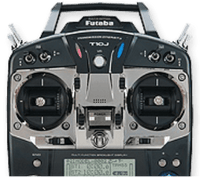Know Before You Fly
by Motion RCIn recent years, quadcopters, multi-rotors or "drones" as they are commonly known have burst on to the RC scene with a fervor never seen before. Drones are ubiquitously ever-present in our society. This has been both good and bad for the RC aircraft hobby. Good in the sense that drones have introduced newcomers to the joy of RC flight, but also bad in the sense that many a knucklehead without any training, care or concern for the safety of others have given the hobby and the majority of us who do fly safely and abide by best safety practices a bad name and a bit of a black eye.
We're sure you've seen or read about the stories in the news. It seems like every week there is a new story about someone flying a drone near a commercial airliner, airport, downtown buildings, stadiums or even one incident where an intoxicated person flew his drone into the White House! Understandably, these reckless acts are quite dangerous and could end in a major catastrophe.
This has forced the FAA and government to get involved, sanctioning the hobby in aggressively intrusive manners that most find overstepping and unnecessary. Thanks to the AMA who have lobbied tirelessly for its members and those of us who do fly responsibly, certain sanctions and rules have relaxed for model aircraft flyers. However, it is essential that anyone new or old to the RC aircraft hobby has an awareness and general understanding of the new laws and regulations that effect all of us in the hobby.
There is a website called Know Before You Fly that is dedicated to informing anyone involved with RC aircraft of the sanctions, rules and regulations that are not suggestions but mandatory aspects of the hobby that must be followed. Not just for drone pilots but fixed wing pilots as well. We highly recommend our customers go to the website and familiarize themselves with these new rules and regulations. Here are some quick highlights and facts to familiarize yourself with:
(credit knowbeforeyoufly.org)
Register Your RC Aircraft
Currently, small unmanned aircraft systems (sUAS) may be operated for hobby and recreational purposes under specific safety guidelines as established by Congress. Small UAS flown for recreational purposes are typically known as model aircraft.
Under the Special Rule for Model Aircraft, recreational UAS must be operated in accordance with several requirements, including a community-based set of safety guidelines and within the programming of a nationwide community-based organization such as the Academy of Model Aeronautics (AMA). Operators not operating within the safety program of a community-based organization should follow the FAA’s guidance here.
As of Dec. 21, 2015, the Federal Aviation Administration requires all owners of small unmanned aircraft, or drones, weighing between 0.55 and 55 pounds to register online before taking to the skies.
What Are The Safety Guidelines?
- Follow community-based safety guidelines, as developed by organizations such as the Academy of Model Aeronautics (AMA).
- Fly no higher than 400 feet and remain below any surrounding obstacles when possible (fixed wing aircraft can fly higher than 400 feet if following the AMA Safety Guidelines).
- Keep your sUAS in eyesight at all times, and use an observer to assist if needed.
- Remain well clear of and do not interfere with manned aircraft operations, and you must see and avoid other aircraft and obstacles at all times.
- Do not intentionally fly over unprotected persons or moving vehicles, and remain at least 25 feet away from individuals and vulnerable property.
- Contact the airport and control tower before flying within five miles of an airport or heliport. (Read about best practices here)
- Do not fly in adverse weather conditions such as in high winds or reduced visibility.
- Do not fly under the influence of alcohol or drugs.
- Ensure the operating environment is safe and that the operator is competent and proficient in the operation of the sUAS.
- Do not fly near or over sensitive infrastructure or property such as power stations, water treatment facilities, correctional facilities, heavily traveled roadways, government facilities, etc.
- Check and follow all local laws and ordinances before flying over private property.
- Do not conduct surveillance or photograph persons in areas where there is an expectation of privacy without the individual’s permission (see AMA’s privacy policy).
Users of commercial and recreational UAS should be aware that in remote, rural and agricultural areas, manned aircraft, including fixed-wing aircraft and helicopters, may be operating very close to ground level. Pilots conducting agricultural, firefighting, law enforcement, emergency medical, wildlife survey operations and a variety of other services all legally and routinely work in low-level airspace. Operators controlling UAS in these areas should maintain situational awareness, give way to, and remain a safe distance from these low-level, manned airplanes and helicopters.
For more information, please visit the Know Before You Fly website at: http://www.knowbeforeyoufly.org
There is another resource for you to peruse that can help you register your drone as well. OutstandingDrone.com. Their website is: https://www.outstandingdrone.com/how-to-register-a-drone-us/
Get the latest from Motion RC sale and product announcements
You can unsubscribe at any time!

Hobby Squawk Community Forum
visit forum
RC Knowledge Blog
visit blog
Guidance & advice for beginners
Find out more- Choosing a selection results in a full page refresh.
- Press the space key then arrow keys to make a selection.



